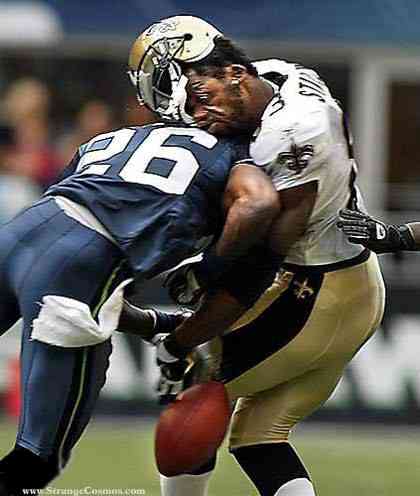The really interesting thing about concussions these days is many individuals seem to have convinced themselves that the risk of a concussion or even continuing in football, wrestling, boxing, or MMA type activities after having had concussions won’t deter them from pursuing the glory, fame, and fortune to be obtained in putting themselves at risk. That’s a fascinating but very flawed concept, as evidenced by the increasing suicide rate among concussed former athletes.
A traumatic brain injury (TBI) is caused by a blunt or penetrating head blow that disrupts some aspect of normal brain function. TBIs may produce changes, ranging from brief alterations in mental status or consciousness to an extended period of unconsciousness or amnesia. (It’s important to note that not all blows to the head result in a TBI.) For the purposes of this discussion, the majority of TBIs that occur each year are concussions. In terms of societal impact, TBIs contribute to a remarkable number of deaths and permanent disability. Every year, at least 1.7 million TBIs occur in the US.
Healthcare professionals may describe a concussion as a “mild” brain injury because concussions are usually not life threatening. Even so, their effects can be serious. Concussive symptoms usually fall in one of four categories:
- Thinking/remembering
- Physical
- Emotional/mood
- Sleep
Red Flags
Get to the ER right away if you have any of the following danger signs after any type of head injury, no matter how minor it may seem:
- Any difficulty waking
- Any loss of consciousness, confusion, or significant agitation
- One pupil (the black part in the middle of the eye) larger than the other
- Loss of ability to identify people, places, the date, or self
- Loss of motion or sensation, weakness, numbness or loss of coordination
- Persistent, worsening headache
- Repeated vomiting
- Slurred speech or difficulty with expression
- Seizures
- Kids will not stop crying and cannot be consoled
- Kids will not nurse or eat
Click here for Part II, in which we discuss complications and treatment options.
Click here for Part III, in which a neurologist adds his thoughts.
Thanks for liking and following Straight, No Chaser! This public service provides a sample of what http://www.SterlingMedicalAdvice.com (SMA) will offer beginning November 1. Until then enjoy some our favorite posts and frequently asked questions as well as a daily note explaining the benefits of SMA membership. Please share our page with your Friends on WordPress, and we can be found on Facebook at SterlingMedicalAdvice.com and on Twitter at @asksterlingmd.
Copyright © 2013 · Sterling Initiatives, LLC · Powered by WordPress


What about certain surgeries, someone I know hadsurgergery for a tumor which turned out to be a hematoma from a stroke and ended up having behavioral problems.
Hi, Sandra. Tumors can bleed and subsequently can cause strokes. Also tumors can cause strokes without bleeding, and bleeding can cause strokes without tumors. Different parts of the brain control different functions, so the behavioral problems indicate which part of the brain was affected. I hope all is well for your friend. Thanks for your comment, and thanks for following Straight, No Chaser.